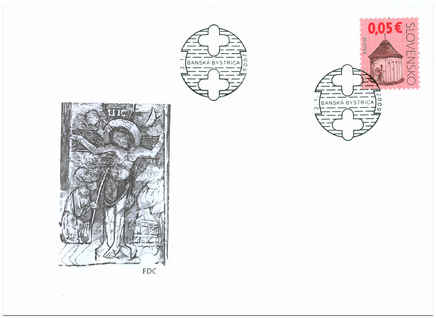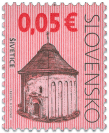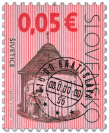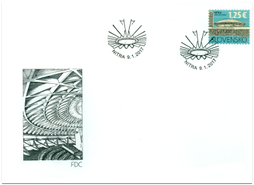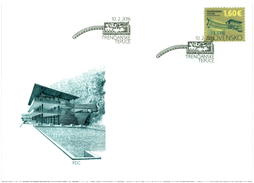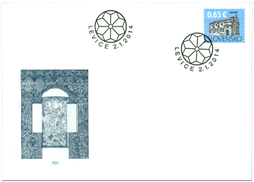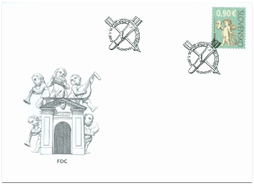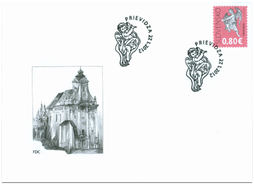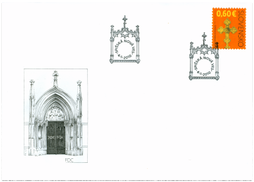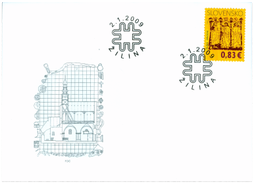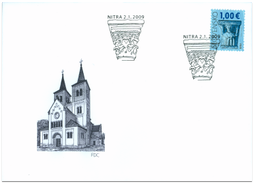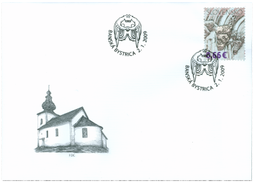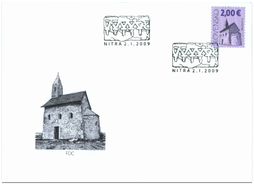FDC 440 Date of issue
02.01.2009 Face value
0.05 € Sell price
1.20 €
© Slovak Post, 2009 The Catholic church of St. Margaret of Antioch in Šivetice represents a building of a central disposition – a rotunda. From the outer side it is made of a perimeter coat. It covers more elaborate architectonic building of the inner space which consisted of two parts of a semicircular ground plan: an apse vaulted by a half-dome and a nave with a quarter-sphere vaulting. Such a design is not directly analogical to Romanesque rotundas on the territory of Slovakia, nor in neighbouring countries. The church is made of brick. Its outer walls are divided by blind lisene arcades. The partially preserved jamb portal and windows with semicircular lintels also belong to the original Late-Romanesque style. It was a member of the Zach family who had the rotunda built at about the 1st half of the 13th century and who owned Šivetice at that time. The church was a kind of noblemen’s church, in which the founder possessed certain privilege rights, e.g. he had the right to be buried here. Apart from sacral functions, the building had probably many others. E.g. slit windows in the attic above the apse show that it served for protection. Such a kind of cumulated functions is nothing out of extraordinary when speaking about medieval churches. The rotunda in Šivetice is exceptional in many ways. Not only thanks to its disposition but also e.g. the size – with the perimeter over 11m, it belongs to the biggest temporary rotundas in Central Europe. Except the architecture, painting decoration is of exceptional importance. It has been preserved in the church apse. In two horizontal strips, two narrative cycles are depicted above each other: the lower one shows scenes from Christ’s life, whereas the upper tells the story on the life of St. Margaret of Antioch, the patron of the church. The legend cycle on St. Margaret created during the 2nd half of the 13th century is the oldest preserved example of the depiction of such a topic not only on the territory of Slovakia by also former medieval Hungary. Bibiana Pomfyová
Show less© 2024 POFIS - Postal philatelic service. All rights reserved

